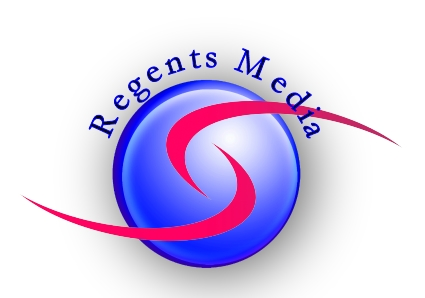Benefits of Niacin (“B3”), The Powerful Ultimate Health Booster!
What is it – Benefits – Sources
Benefits of Niacin, What Are They?
Niacin, also known as Vitamin B3, is a water-soluble vitamin that is part of the B-complex family of vitamins.
It is also sometimes referred to as nicotinamide, nicotinic acid, or niacinamide. It, like all other B vitamins, has a number of benefits for the body and is essential for over 400 distinct enzymatic reactions, and helps support our cellular functions in a variety of ways.
Below is a list of Niacin’s top benefits!!
Benefits of Niacin, Top 9
- Niacin has long been used in pharmacologic doses to reduce serum cholesterol levels. It has shown to reduce the body’s ability to make triglycerides.
- It also acts to lower the bad cholesterol in the body, known as low density lipoprotein (LDL) while inhibiting the removal of good cholesterol known as high density lipoprotein (HDL) from our blood serum.
- It is a very essential part of converting the potential energy from food to ATP (adenosine triphosphate). ATP is the body’s expendable energy source and powers all of our activities and gives us the energy we need.
- It has been shown to have anti-inflammatory effects and protects our cells from oxidative damage. This function is very helpful in reducing atherosclerosis or the buildup of plaque in our vessels.
- It can help decrease blood pressure. Because niacin has a vasodilatory effect, it relaxes blood vessels and can have utility in the treatment of various circulatory problems and can help lower blood pressure.
- Niacin can help relieve menstrual cramps.
- It is needed for healthy nervous system functioning. In fact, deficiency symptoms include memory loss, irritability, depressed mood, and overall weakness.
- It has a role in decreasing mouth, throat, and esophageal cancers. A case control study found a diet high in antioxidants and consumption of niacin (6.2 mg) per day was associated with a drop in the above-mentioned cancer cases.
- It can benefit skin. Although more studies are needed, some early investigations show a possible benefit with regard to ultraviolet or sun induced skin sensitivity and even skin cancer.
Vegan Sources of Niacin, Top 20
| 1. Bulgur | 2. Brown and white rice | 3. Peanuts |
| 4. Sunflower seeds | 5. Pumpkin seeds | 6. Cashews |
| 7. Soy milk | 8. Tofu | 9. Edamame |
| 10. Lentils | 11. Chickpeas | 12. Potato |
| 13. Tomatoes | 14. Broccoli | 15. Spinach |
| 16. Onions | 17. Apples | 18. Bananas |
| 19. Raisins | 20. Whole wheat breads and cereals |
Special Considerations
- People who have alcohol use disorder, inflammatory bowel disease, liver cirrhosis, and AIDS may be at increased risk for deficiency.
- People who take certain drugs like isoniazid, pyrazinamide which are usually used to treat tuberculosis may have less ability to absorb and assimilate Niacin.
- Diabetic patients who take large therapeutic doses of vitamin B3 (not from food sources) may be at risk for increased blood glucose levels. Be sure to check with your doctor.
- Therapeutic doses can cause adverse side effects such as skin flushing and a tingling sensation after taking large therapeutic doses of niacin (this does not apply to natural food sources). Other side effects include headache, abdominal pain, rash, dizziness, and a decrease in blood pressure. The side effects of pharmacologic doses tend to be the number one cause for stopping this form of lipid lowering therapy.
- High doses of niacin, taken over months can also cause liver damage. Your doctor will need to monitor your liver function with regular blood tests.
Continue on to our posts below and learn about all the vitamins you’ll need to stay healthy and fabulous!!
Benefits of Vitamin E, a Wonderful Driving Force Deserving the Nick Name “The Anti-Aging Power House
Benefits of Vitamin E include being a family of 8 compounds: 4 tocotrienols (alpha, beta, gamma, and delta) and 4 tocopherols (alpha, beta, gamma, and delta). Tocotrienols are of interest to folks who study biochemistry. For the purpose of this blog post we will focus on tocopherols which are well known antioxidants.
Folic Acid (B9) Magnificent Benefits – Also Known As The Neural Tube Defender
Not only does Folic Acid magnificent benefits help our body produce and maintain new cells, but also helps prevent unforeseeable changes to our DNA which changes may lead to the production of cancer. But what is one of its most important features? You guessed it, life conception.
Vitamins
Vitamins are a magnificent, powerful, and necessary group of compounds that are essential for a multitude of biochemical reactions in the body. They are indispensable for maintaining health and recovering from illness.
Benefits of Vitamin A, A Real Crusader
Benefits of Vitamin A, Synopsys: Vitamin A is a fat-soluble vitamin found in our diet and stored in our liver and it has multiple functions. For instance, it is important for growth and development, for the maintenance of the immune system, and for good vision.
Benefits of Vitamin C – The Wonderful and Incredible Beauty Boosting Multitasker
Benefits of Vitamin C. This vitamin is a water-soluble vitamin that is a major part of keeping our bodies’ metabolic functions intact. It is important because Vitamin C deficiency leads to impaired collagen synthesis, contributing to several maladies.
Beauty and Benefits of Vitamin C. The True Secret Behind Smooth, Firm, and Evenly Toned Skin!!!
This is where the benefits and beauty of Vitamin C comes in. Our skin is dependent on this stuff to produce collagen and keeps skin’s elasticity and firmness. It also protects skin from free radical damage that can show up on skin as discoloration, loss of tone, and wrinkles. So, it is essential that we consume foods with high Vitamin C content.






